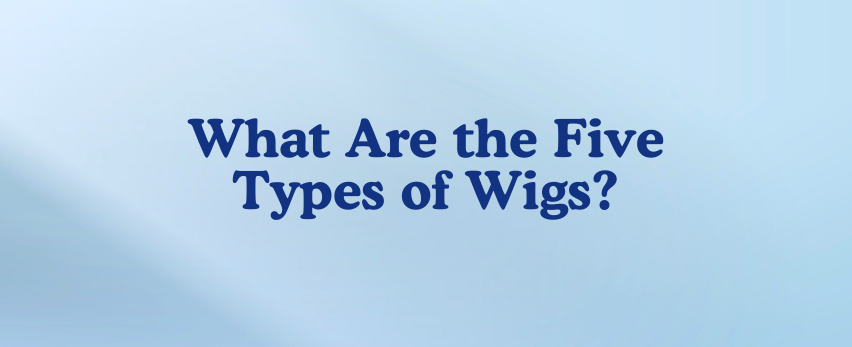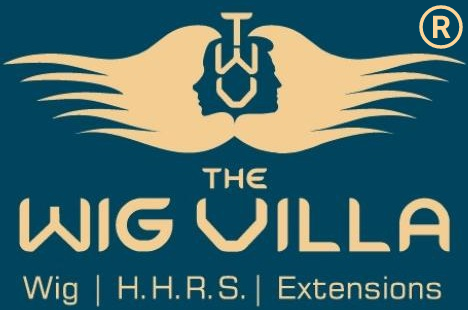
What Are the Five Types of Wigs?
What Are the Five Types of Wigs?
In order to facilitate the classification process, we have separated wigs based on the materials used by wig makers to create the wig cap. To assist you in choosing the wig type that best suits your requirements, we'll also list the advantages and disadvantages of each type. The various wig types by manufacturer are as follows:
Lace Wigs (Full Lace and Lace Front)
Lace wigs, one of the most common types of wigs, get their name from the mesh lace that serves as their base material and adapts color to match your scalp. To create that movement and natural-looking appearance, the hair fibers are hand-tied to the sheer lace mesh. There are two types of lace wigs: full lace and lace front.
Full lace wigs have a complete and adaptable appearance because the sheer lace mesh covers the entire wig base. This kind of lace wig is appropriate for women who wish to part their hair sideways or in any direction, or who wish to wear their hair in a ponytail without showing the wig base. These go well with any hairstyle without taking away from the natural look.
On the other hand, the front part of lace front wigs covers the forehead and has 1.5 to 3 inches of sheer lace material. This kind of lace wig offers one of the most realistic-looking hairlines and is appropriate for ladies who wish to try out side- or center-focused hairstyles without showing the edges of the wig. For women who just want to wear their hair down, these are also appropriate.
Pros
- Natural-looking
- It creates a hairline that looks natural.
- Perfect for the majority of hairstyles (up or down)
- breathable and Comfortable for the scalp
- Lightweight
Cons
- Delicate and needs to be handled carefully
- Perhaps a haircut and custom fitting are required.
- Adhesives or lace tape may leave residue on the scalp.
- Pricier than capless wigs
Monofilament Wigs
There are some notable differences between the next type of hair wig and lace wigs, but there are also some similarities. The way the hair fibers are individually attached to the wig base to create the illusion that hair is growing organically from the scalp is one crucial distinction. The base material is thin but noticeably more durable than a lace wig base, and it is patterned like gauze, just like lace wigs.
In terms of fashion, this is appropriate for women who prefer sleek hairstyles over the thick and voluminous looks of other hair wig types. There are various varieties of monofilament wigs, including single monofilament wigs and double monofilament wigs.
100% hand-tied hair fibers that resemble real hair in appearance, texture, and movement are used in single monofilament wigs. Without worrying about exposing the "scalp" underneath, you can part your hair anywhere and in any direction. The wig's natural appearance is enhanced by the mesh material underneath, which resembles a real scalp.
Double monofilament wigs are comparable to single monofilament wigs, but they have an extra layer of glass-silk to give the scalp a more realistic appearance. Women with sensitive scalps who want additional protection from the wig knots beneath the base can use this.
Pros
- Natural-looking
- Hand-tied individual fibers to for natural hair movement
- Anywhere you want to part your hair without showing the wig base
- Long-lasting monofilament mesh
- Extra safeguarding for the scalp
- Lightweight and comfortable
- Ideal for sleek hairstyles
Cons
- Costlier due to the hand-tying procedure
- Reduced volume
- Fewer hair fibers
Combination Wigs
Both hand-tied and machine-sewn parts are used in combination wigs, as the name implies. These wigs look natural, especially on the crown or upper portion, and resemble monofilament. The wig's back and sides are machine-sewn and less noticeable.
Because combination wigs are manufactured more quickly and require fewer labor-intensive procedures, they are less expensive than full monofilament wigs. Similar to monofilament wigs, it moves like natural hair, but styling options are limited because of the machine-sewn parts that some hairstyles, like an updo or ponytail, may show.
Pros
- Hand-tied sections resemble natural hair in appearance and movement.
- Cheaper than monofilament wigs
Cons
- Fewer options for styling
- Not as breathable as wigs made of lace and monofilament
- Less natural-looking
- Limited hair parting (only the top or crown)
Capless Wigs
Of all the wig types, capless wigs are the most accessible and least expensive. They are also the most basic. The hair fibers in these so-called open-weft or open-cap wigs are entirely machine-sewn and fastened to an elastic wig cap.
Because there is no mesh material that mimics the scalp, this type of wig does not have a "natural scalp" like the other wigs in the preceding sections. Nonetheless, they are very easy to maintain and long-lasting. Additionally, compared to other wig styles, the open cap design offers greater comfort and breathability.
On another note, they might look natural from a distance, but up close, the texture, volume, and height of the hair might reveal that it is artificial.
Pros
- Very accessible and reasonably priced
- Long-lasting and simple to maintain
- Incredibly comfortable and breathable
Cons
- Artificial-looking
- When there is no mesh, the scalp's hair-attaching seams are visible.
- Unsuitable for styling
Polyurethane Thin Wigs
The final kind of wig is composed of polyurethane, an organic polymer or plastic. Also referred to as PU thin wigs, they feature a more realistic-looking scalp base than lace or monofilament mesh bases, which simulate hair growing through the scalp. These hair wigs are easily attached to wig tapes and adhesives.
Those who wish to wear a wig must have it custom-fitted because the base is not elastic. Because they appear to float above the natural hair, PU-thin wigs are not suitable for women with full hair. PU-thin wigs are especially beneficial for women who are undergoing chemotherapy or who are experiencing complete hair loss because they appear extremely natural. The majority of PU wig wearers have complained about the material's heat on their scalp, which is one drawback of the breathability of the polyurethane.
Pros
- matches the skin tone of your scalp.
- With or without adhesives, firmly adhere to the scalp.
- Ideal for women who are completely hairless
- The hair can be parted in any way.
- Simple upkeep
Cons
- It is not recommended for women who have natural hair.
- The material feels warm over the scalp
- More expensive because of the material
- Uncomfortable
- Non-elastic foundation wig
Where to Buy the Best Hair Wigs?
Having learned the distinctions between the various types of wigs, you are likely aware of the type of hair wig you will buy. The only issue at hand is where to get a great hair wig that fits your personality perfectly and is reasonably priced.
With a range of 100% human hair wigs that will look just as gorgeous and natural as real hair, The Wig Villa has you covered on this issue. We can offer you professional recommendations and guidance that will give you the individualized touch for which The Wig Villa Wigs is renowned, regardless of why you are buying a hair wig. Contact us right now to schedule a free consultation!
